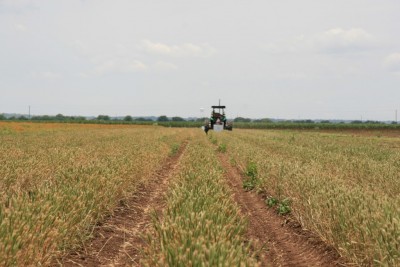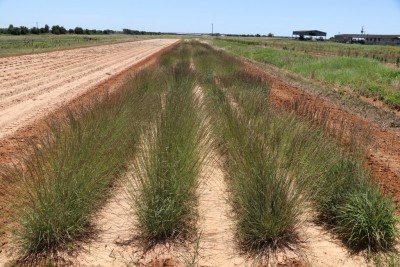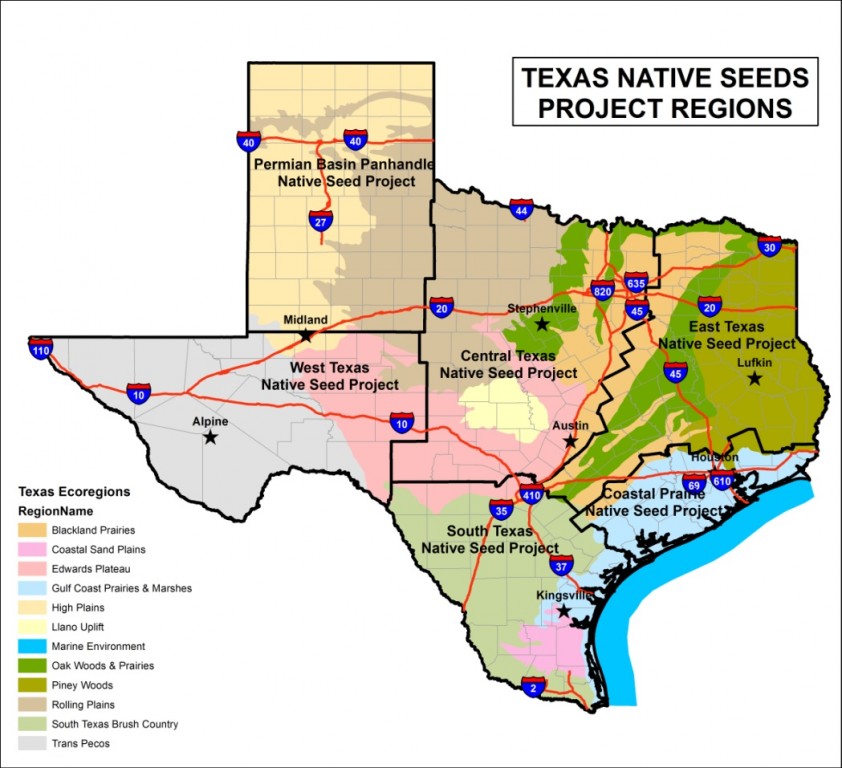
About Us
 Highways, oil and gas production, wind farms, transmission lines, urbanization-the signs of progress for Texas are also the sources of decline for native plant communities in Texas. From desert grasslands of West Texas to Blackland prairies of Central Texas to brushlands of South Texas, native habitat disturbance is on the rise, resulting in damage or loss of the native plant communities that are critical for wildlife. Nonnative grasses, such as buffelgrass and guinea grass in South Texas and Old World bluestems and bermudagrass throughout the rest of the state often invade disturbed areas of native habitat without native plant restoration efforts. The availability and use of native seeds, proven restoration methods for native plant communities, and awareness of the value of restoration is imperative to maintaining future wildlife habitats in Texas.
Highways, oil and gas production, wind farms, transmission lines, urbanization-the signs of progress for Texas are also the sources of decline for native plant communities in Texas. From desert grasslands of West Texas to Blackland prairies of Central Texas to brushlands of South Texas, native habitat disturbance is on the rise, resulting in damage or loss of the native plant communities that are critical for wildlife. Nonnative grasses, such as buffelgrass and guinea grass in South Texas and Old World bluestems and bermudagrass throughout the rest of the state often invade disturbed areas of native habitat without native plant restoration efforts. The availability and use of native seeds, proven restoration methods for native plant communities, and awareness of the value of restoration is imperative to maintaining future wildlife habitats in Texas.
Influenced by changes in land management goals over the last 2 decades, from a livestock production based economy on rangelands, to an economy based on recreation, conservation, and multiple uses, in much of Texas, current land management goals are complimented by native plants.
As a result, the need and desire for restoration of native plants by private landowners and government agencies has increased substantially. A cornerstone of restoration for disturbed or displaced native habitats are cost-effective, commercially available native seed sources, available in large supply to meet the scope of the need in our state.
|
Common land management needs benefitted by native seed sources and restoration methodology developed by TNS include:
|
T exas Native Seeds was founded by a generous research grant from the Texas Department of Transportation (TxDOT) on September 1, 2010. Private funding, corporate donations, and many state and federal agency supporters have since supported the effort, and enabled the current statewide extent. Texas Natives Seeds is a collaborative project, with leadership, participation and in-kind support from a variety of private landowners, academic institutions, natural resources conservation groups, and agencies.
exas Native Seeds was founded by a generous research grant from the Texas Department of Transportation (TxDOT) on September 1, 2010. Private funding, corporate donations, and many state and federal agency supporters have since supported the effort, and enabled the current statewide extent. Texas Natives Seeds is a collaborative project, with leadership, participation and in-kind support from a variety of private landowners, academic institutions, natural resources conservation groups, and agencies.
Native habitats are a vital part of our Texas heritage, and with your help, Texas Native Seeds will insure that legacy is maintained and enhanced for future generations to enjoy.
